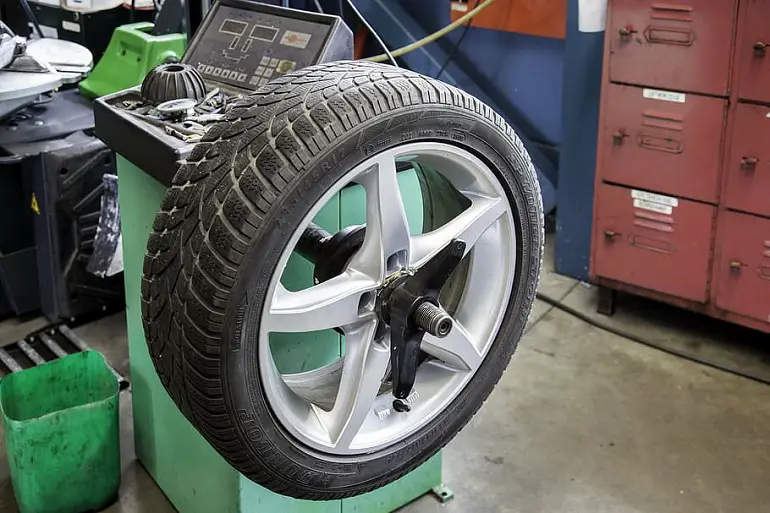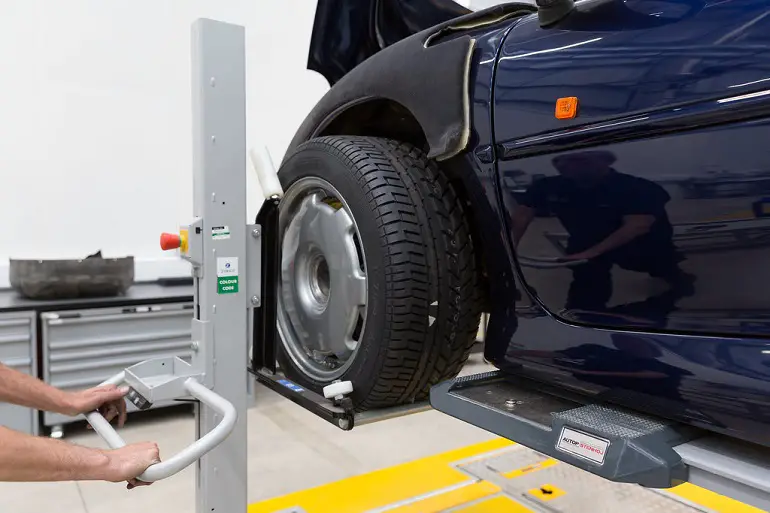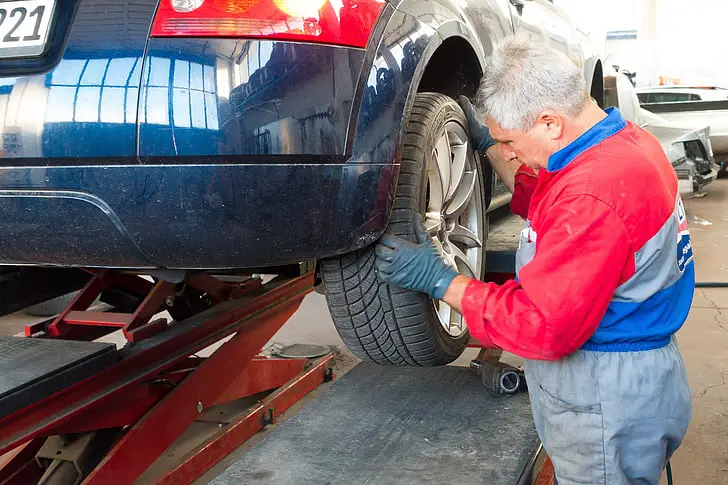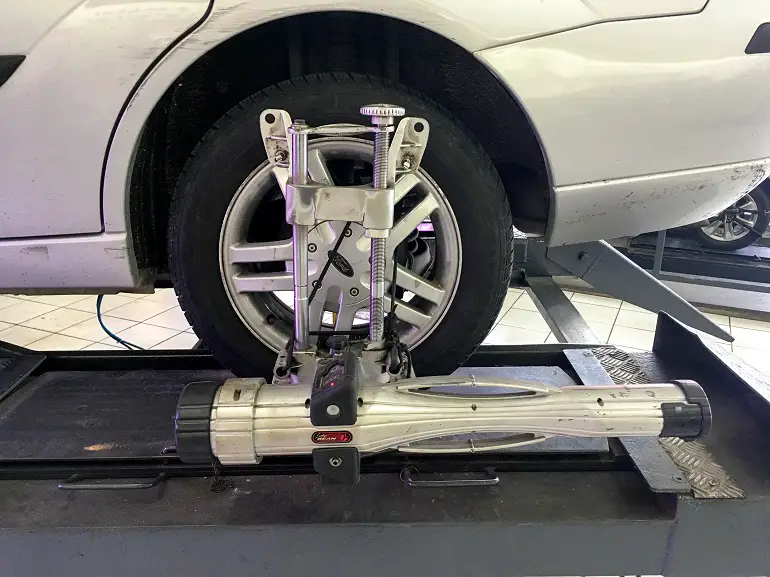Introduction:
Have you ever experienced your car pulling to one side, uneven tire wear, or a shaky steering wheel? If so, there’s a high chance that your vehicle needs a tire alignment. Proper tire alignment plays a crucial role in ensuring a smooth and safe driving experience. In this comprehensive guide, we’ll delve into the world of tire alignment, exploring what it is, why it matters, signs of misalignment, the benefits of regular alignment, and how to maintain optimal alignment for your vehicle. So, buckle up and let’s hit the road!
Understanding Tire Alignment
Tire alignment, also known as wheel alignment, refers to the adjustment of the angles at which your vehicle’s tires make contact with the road surface. The goal of alignment is to ensure that all wheels are parallel to each other and perpendicular to the road, optimizing tire performance, fuel efficiency, and overall handling.
The Importance of Tire Alignment
Proper tire alignment offers several benefits that go beyond a smooth ride. Firstly, it enhances your vehicle’s safety by ensuring even tire wear, improving traction, and reducing the risk of accidents. Secondly, alignment promotes fuel efficiency, as misaligned tires can create excess friction, leading to decreased mileage. Finally, proper alignment minimizes stress on suspension components, prolonging their lifespan and reducing maintenance costs.

Signs of Misaligned Tires
Identifying signs of tire misalignment is vital to prevent further damage and maintain optimal vehicle performance. Look out for the following indications:
- Vehicle Pulling: If your car drifts to one side, especially when driving on a flat surface, it’s likely a sign of misalignment.
- Uneven Tire Wear: Inspect your tires regularly for uneven wear patterns, such as excessive wear on one side or in the middle.
- Vibrating Steering Wheel: If you feel vibrations or a shaky steering wheel while driving, it could be a result of misaligned tires.
- Off-Center Steering Wheel: A steering wheel that sits off-center even when driving straight indicates alignment issues.
Benefits of Regular Tire Alignment
Regular tire alignment offers long-term advantages that make it a worthwhile investment. Some key benefits include:
- Improved Fuel Efficiency: Proper alignment reduces rolling resistance, allowing your vehicle to move more efficiently, ultimately saving you money at the pump.
- Extended Tire Lifespan: Alignment ensures even tire wear, extending the life of your tires and preventing premature replacements.
- Enhanced Safety: Proper alignment improves vehicle handling, stability, and traction, reducing the risk of accidents, especially during emergency maneuvers.
- Smoother Ride: Eliminating vibrations and uneven tire wear enhances overall driving comfort, making your journeys more enjoyable.

How Tire Alignment Works
Tire alignment involves adjusting three primary angles: camber, toe, and caster. Camber refers to the inward or outward tilt of the tire when viewed from the front, toe describes the angle at which the tires point inwards or outwards, and caster relates to the angle of the steering axis. Professional technicians use specialized equipment to measure these angles accurately and make necessary adjustments.
DIY Tire Alignment vs. Professional Service
While some automotive enthusiasts may attempt a DIY alignment, it’s crucial to note that proper alignment requires specialized knowledge and equipment. Professional service ensures precise adjustments, proper calibration, and a comprehensive inspection of other suspension components. To achieve optimal results and ensure your safety, it’s recommended to rely on certified technicians for tire alignment.
Maintaining Optimal Tire Alignment
To maintain optimal tire alignment, consider these practical tips:
- Regular Inspections: Have your alignment checked at least once a year or whenever you notice any signs of misalignment. Prevention is key to avoiding further damage and costly repairs.
- Be Mindful of Road Hazards: Potholes, curbs, and rough roads can throw your alignment off balance. Exercise caution and try to avoid these hazards whenever possible.
- Check Tire Pressure: Maintaining proper tire pressure is essential for optimal alignment. Ensure that all tires are inflated to the manufacturer’s recommended levels regularly.
- Rotate Tires: Regular tire rotation helps promote even wear, preventing misalignment caused by uneven tire tread patterns. Follow the recommended rotation schedule outlined in your vehicle’s owner’s manual.
- Seek Professional Assistance: If you encounter any issues with your vehicle’s handling, steering, or tire wear, consult a professional technician for a comprehensive inspection and alignment if necessary.

Common Myths About Tire Alignment
Let’s debunk some common misconceptions surrounding tire alignment:
- “Alignment Is Only Necessary After an Accident”: While accidents can certainly cause misalignment, everyday driving conditions like potholes and curbs can also lead to alignment issues. Regular alignment checks are essential for preventive maintenance.
- “Tire Balancing and Alignment Are the Same”: Tire balancing and alignment are two distinct procedures. Balancing involves equalizing the weight distribution of the tire and wheel assembly, while alignment focuses on adjusting the angles for proper tire contact with the road.
- “Alignment Is Expensive and Time-Consuming”: The cost of alignment is minimal compared to the potential savings on fuel, tire replacement, and suspension repairs in the long run. Most alignment services can be completed within an hour, ensuring minimal disruption to your schedule.
Professional Alignment Services
When it comes to professional alignment services, various options are available:
- Dealerships: Vehicle dealerships often offer alignment services performed by certified technicians who specialize in your specific make and model.
- Auto Repair Shops: Local auto repair shops with skilled technicians can also provide alignment services using advanced equipment and expertise.
- Tire Retailers: Many tire retailers offer alignment services alongside tire sales. This convenient option allows you to address alignment concerns when purchasing new tires.
Conclusion
Maintaining proper tire alignment is an essential aspect of vehicle maintenance that should not be overlooked. From enhancing safety and fuel efficiency to extending tire lifespan and improving overall handling, alignment plays a vital role in your driving experience. By understanding the importance of alignment, recognizing signs of misalignment, and seeking professional services when needed, you can ensure that your wheels stay on track, providing a smooth and enjoyable journey every time you hit the road.
Remember, regular alignment checks and preventive measures are key to avoiding costly repairs and maximizing the longevity of your tires and suspension components. Stay proactive, prioritize alignment, and reap the benefits of a well-aligned vehicle. Safe travels!


